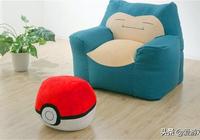超強力膠水非常適合修補裂開的書架、行李箱輪子,當然還有鞋子。不過,如果你想黏合稍微有點晃動的東西,比如用於填補破裂脊椎盤的凝膠墊,就不會這麼走運了。如今,科學家發明了一種新的膠水。它能將軟硬物質同被用於從醫療設備到軟體機器人的一切東西、像果子凍一樣的水凝膠材料黏在一起。
此前,這些領域的研究人員利用的是紫外光處理,但這可能需要1個小時或者更多時間將表面連接在一起。現在,一個由實驗物理學家組成的團隊發明了一種新的粘合劑。它由超強力膠水的主要成分——氰基丙烯酸酯——加上一種會滲入被黏合部件的有機化合物製成,從而產生一種不會留下易碎殘渣的韌性粘接劑。
這種非溶劑會將膠水的硬化時間延長到剛好使其滲入被壓在一起的各層,從而在幾秒鐘內形成粘結劑。這種水凝膠粘結劑能承受1千克重量,並且拉伸至原來的20倍。研究人員在日前出版的《科學進展》雜誌上報告了這一發現。
對於脊椎外科醫生和機器人愛好者來說,這是個好消息——這種新型粘合劑不僅能幫忙建造像章魚機器人一樣的設備,還可被用於通過黏附在皮膚上的柔軟、透水貼劑來運送藥物。它還能幫助研究人員設計可伸展的電池和電子皮膚—— 一種基於水凝膠的電子貼劑,上面裝滿檢查生命體徵並同設備外交流的各種傳感器。唯一的缺點是什麼?那就是3~5年內不會上市。
原文鏈接:
原文摘要:
Superglue is great for fixing busted bookshelves, suitcase wheels, and—of course—shoes. But what if you want to fuse something a little more jiggly, like the gel cushions used to pad crumbling spinal discs? You’d be out of luck, until now. That’s because scientists have created a new kind of glue that can bond hard and soft substances to hydrogels, Jello-like materials used in everything from medical devices to soft robots. Previously, researchers in these fields used an ultraviolet light treatment, but it could take up to an hour or more to attach the surfaces together. Now, a team of experimental physicists has invented a new adhesive, made of superglue’s main ingredient—cyanoacrylate—plus an organic compound that diffuses into the parts being fused, leading to a tough bond without brittle residue left behind. This nonsolvent delays the hardening of the glue just long enough to let it seep into each layer being pressed together, forming a bond within seconds. The hydrogel bond can hold up to 1 kilogram and stretch up to 2000%, the researchers report this week in Science Advances. That’s good news for spine docs and robotics buffs alike—not only can the new adhesive help build devices like this octobot, but it can also be used to deliver drugs through soft, permeable patches that adhere to the skin. It can also help researchers designing stretchable batteries and electronic skin, hydrogel-based electronic patches packed with sensors for taking vital signs and communicating with outside devices. The only downside? It won’t be on the market for another 3 to 5 years.

